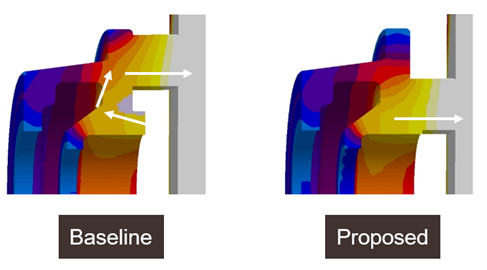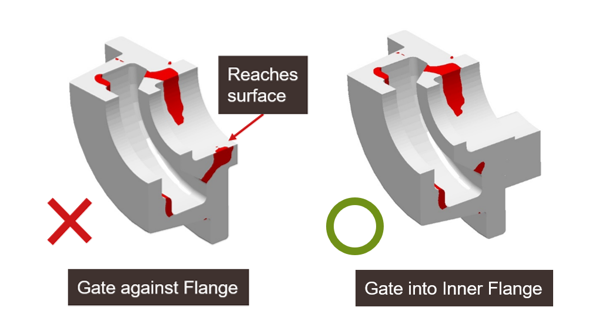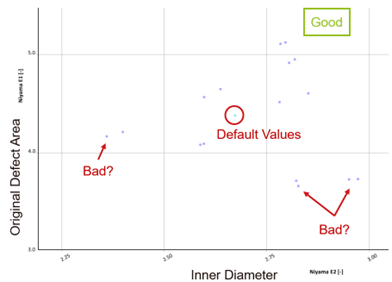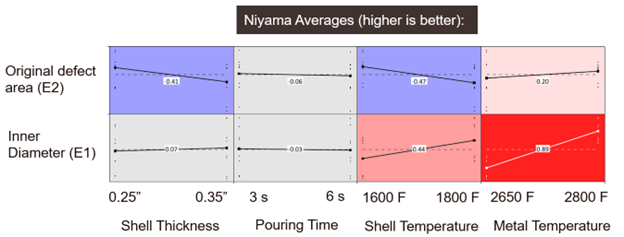Quickly Resolving Leaks with Investment Casting Simulation
Acra Cast is a custom investment casting foundry that’s called Bay City, MI home for 50 years. They’re known in the industry for going to considerable lengths to ensure their customers get high quality parts, and get them on time.
When leak defects were discovered in some of their pump gland castings, engineers at Acra Cast evaluated their options. Leaks in castings can be difficult to solve without extensive sampling, which is time-consuming and costly. Acra Cast reached out to MAGMA to get an expedited solution through simulation.
MAGMASOFT® showed regions where directional solidification could be improved, right where the castings were leaking (shown above – colors indicate time of solidification). At the same location, microporosity stretched through the wall of the part. To eliminate the leak, microporosity cannot be allowed to reach through the wall of the casting. In MAGMASOFT®, the Niyama Criterion is commonly used to identify regions that may contain microporosity.
Engineers at MAGMA ran a design of experiments (DOE) that tested different gate length and gate positions. The DOE yielded a combination of gate dimensions that eliminate the leak path, while avoiding forming a new leak along the inner diameter a of the casting. Below, we can see low Niyama values in red, which show a risk of leaking.
While close to a solution, the engineers at MAGMA were only certain of the solution working under a specific set of process conditions. To verify that the casting would work under the full range of process conditions, the engineers ran another DOE with varied metal temperature, pouring time, shell temperature, and shell thickness. The results were evaluated at the original location, as well as along the inner diameter of the casting, which had a propensity to show leaks.
As shown above, not all of the process variables combinations were free of microporosity, even with the optimized gates. The MAGMA engineering team found that if the shell and the metal were both at the lower end of the acceptable range, leaks could occur. Using this data, the engineers were able to recommend higher pouring temperatures and shell temperatures that were originally used.
Additionally, it was found that the variables impacted the defect areas different. Below, the impact of each variable on the average Niyama criterion is shown. Higher values are better. This plot shows the need to strike a balance between high and low shell temperature, as either condition can negatively impact the Niyama criterion.
Simulating the process variability allows us to ensure that gating solutions work every time, and not just under the optimal conditions. As a result of the project, Acra Cast was able to quickly prototype the new gate design and eliminate the leaking pump glands.
About Acra Cast
For 50 years, Acra Cast has been a metalcaster of high quality investment steel castings to some of the largest companies in the U.S., serving critical industries including defense, automotive, material handling, pump & valve, food processing and more.



